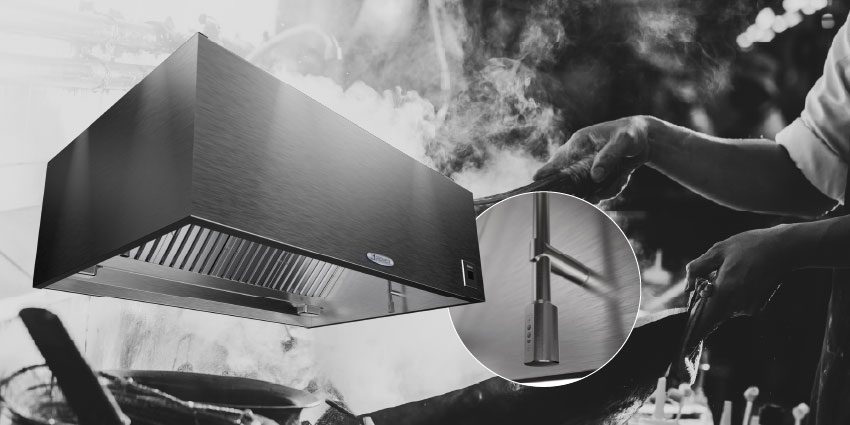Enhancing a Kitchen Ventilation System with Optimized Hood Controls

With the smoke, steam, and heat that arise from cooking in a commercial kitchen even when everything is going according to plan, having an effective and quick-reacting kitchen ventilation system is crucial. That’s why mechanical and fire codes require system components such as temperature-based sensors, exhaust fans that turn on automatically, and make-up air. But beyond minimum code requirements, safety and energy efficiency can be enhanced through hood controls that save operating dollars and can save lives in the event of a fire. Here are some components of optimized hood controls for today’s kitchens.
Optical Sensors that React Even Faster
Demand control ventilation (DCV) systems control exhaust flow based on a temperature probe. The most effective mounting location for the probe is in the capture tank on the hood. This responds to temperature up to 5x faster than the common alternative location in the exhaust collar behind the filter. However, for critical moments when seconds count, a newer feature enhances the temperature probe’s monitoring: optical sensors.
One of the sensors emits an invisible infrared beam through the hood canopy. The other sensor continually monitors how much of the beam is reflected back to it. If the beam is blocked by smoke or steam, even by as little as 7%, the ventilation system reacts within seconds to scale up to the amount of ventilation needed. As the smoke clears and the fans scale back down, temperature-based modulation resumes.
The advantage to a system that includes this feature is clear when one considers that putting food, such as a steak fresh out of the refrigerator, onto a hot cooking surface both discharges smoke and lowers the temperature of the surface. The resulting dip in grill temperature can deceive heat sensors into reducing exhaust flow, when in fact more ventilation is needed. Optical sensors respond accurately to this common cooking situation and trigger exhaust fans in seconds, not minutes.
 |
| Optical Sensor |
Variable Volume Systems that Reduce Energy Costs
You will recall that locating a range’s temperature sensor in the capture tank on the hood, rather than the exhaust collar, is up to five times faster at detecting heat. This affects not only safety, which is the most important thing, but energy costs, because when the sensor tells the fan to turn down based on the temperature lowering, it turns down 5x faster. However, this level of precise modulation is only possible with a variable volume system.
Kitchen ventilation systems are often constant volume, meaning that when cooking appliances begin generating heat, the exhaust and supply fans operate at their design volumes. With a variable volume system, fan speeds adjust in response to hood temperature. During periods of minimal cooking, when appliances don’t require full ventilation, a variable volume system can turn down fan speeds by up to 50%. (A turndown to a lower percentage of maximum fan speed depends on the capability of the make-up air unit and is generally not achievable unless the unit is not tempering air.)
This 50% turndown can translate into energy savings of up to 88% when the kitchen ventilation system is operating at half speed. This complies with energy standards like IECC 2015, California’s Title 24, and ASHRAE 90.1. Typically, the payback for the additional cost of the system is in 1–3 years.
If incorporating optic sensors on a variable volume system, you can take additional measures to provide more energy savings by fine-tuning the temperature and speed set points. By lowering the maximum temperature range setting slightly, systems will run at less than 100% speed with no smoke, and the only time fans will run at 100% speed is when the optical sensors detect smoke. In this way, additional energy is saved without negatively impacting hood performance or causing smoke to roll out from the canopy.
A User Interface on Every Hood
Kitchen ventilation systems are often controlled through a single user interface. However, putting one on every hood allows for greater flexibility and precision. An effective user interface should have these features:
- Easy-to use color touchscreen display
- Capable of managing fans, lights, and make-up air
- Allows for troubleshooting issues that arise during a shift
- Can include a room thermostat for exact temperature monitoring
 |
| Hood-Mounted User Interface |
Finding Optics-Driven Variable Volume Hood Controls
Greenheck’s kitchen ventilation systems can include variable volume controls with optical sensors, a color touchscreen interface on every hood, and more. Your local Greenheck representative is available to discuss solutions for making a kitchen ventilation system safer and more efficient.
Kitchen Ventilation

from